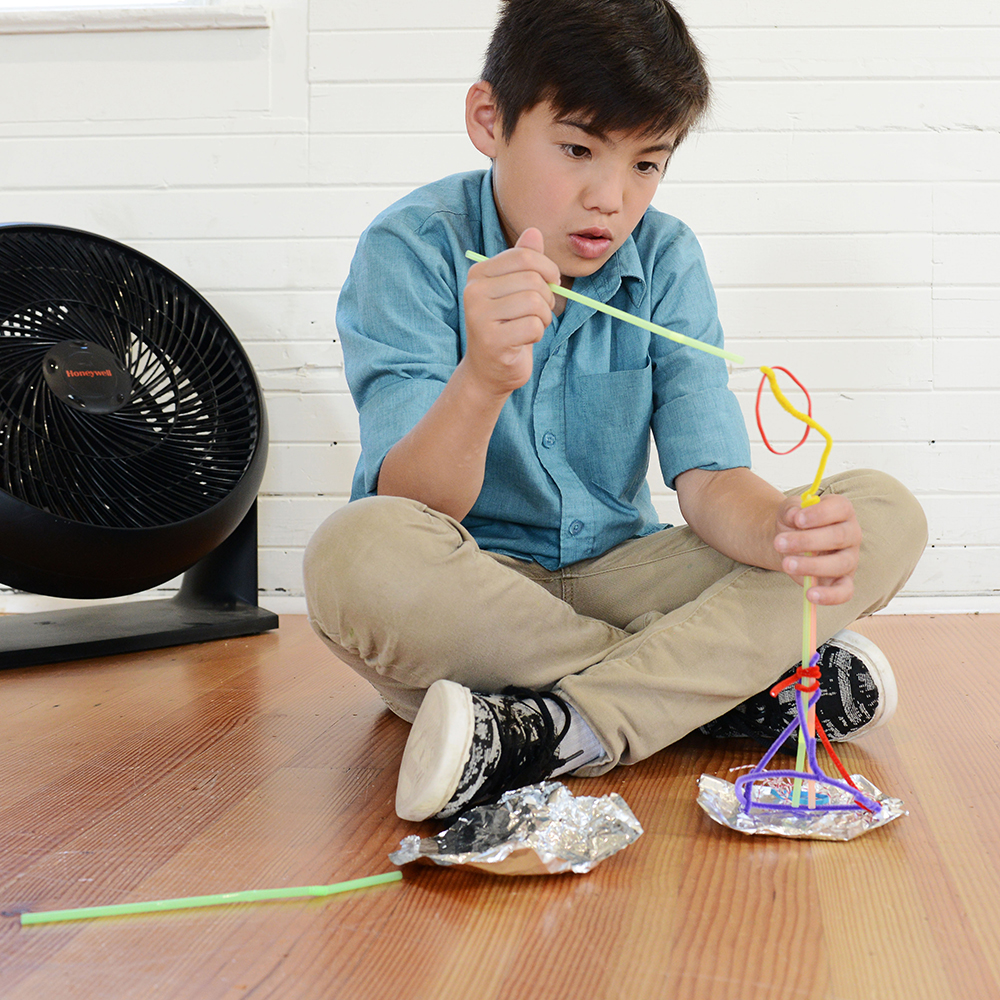Build a tower that is as tall and durable as possible, and then test the structure in the wind by placing a fan in front of it. Will the tower withstand the windstorm? This activity introduces children to the process of trial-and-error, as well as problem solving.
Materials Required
- 4 pipe cleaners
- 4 straws
- Fan
- 1 piece of foil
- 4 mailing labels
- Yardstick (for measuring only)
- 2 rubber bands
- 1 12-inch piece of string
- Chair (to use as a post for the tower)
Instructions
- Set a timer for 15 minutes. Use the materials to build a tower that is as tall and durable as possible. Attach the structure to a chair (or other post) using the rubber bands or string. Be sure to place the post close enough to an electrical outlet so the fan can still reach the tower when it is plugged in.
- When time is up, measure the tower. Record how tall it is.
- After recording the height, test to see if the tower can withstand a windstorm. With adult supervision, set a fan 24 inches from the tower. Turn it on low. Does the tower hold?
- After 15 seconds, turn the fan off. Measure the height of the tower again. Is it still as tall?
Additional Tips
Try these add-on activities:
- Turn the fan on high and see if the tower can withstand even stronger winds.
- With adult supervision, set the fan 12 inches from the tower and turn it on low. Can it still withstand the wind? What if the fan speed is set to high?
- Can the tower withstand an earthquake? Gently shake the chair. Measure the tower again. Is it still as tall?
- Try building another tower using twice the amount of each material. How does this change the construction?


